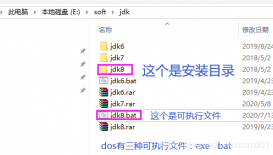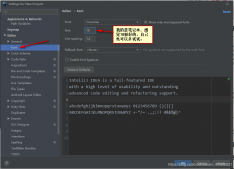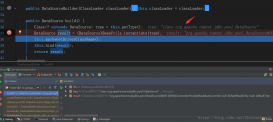前文传送门:ByteBuf使用subPage级别内存分配
ByteBuf回收
之前的章节我们提到过, 堆外内存是不受jvm垃圾回收机制控制的, 所以我们分配一块堆外内存进行ByteBuf操作时, 使用完毕要对对象进行回收, 这一小节, 就以PooledUnsafeDirectByteBuf为例讲解有关内存分配的相关逻辑
PooledUnsafeDirectByteBuf中内存释放的入口方法是其父类AbstractReferenceCountedByteBuf中的release方法:
|
1
2
3
4
|
@Override public boolean release() { return release0(1); } |
这里调用了release0, 跟进去
|
1
2
3
4
5
6
7
8
9
10
11
12
13
14
15
|
private boolean release0(int decrement) { for (;;) { int refCnt = this.refCnt; if (refCnt < decrement) { throw new IllegalReferenceCountException(refCnt, -decrement); } if (refCntUpdater.compareAndSet(this, refCnt, refCnt - decrement)) { if (refCnt == decrement) { deallocate(); return true; } return false; } }} |
if (refCnt == decrement) 中判断当前byteBuf是否没有被引用了, 如果没有被引用, 则通过deallocate()方法进行释放
因为我们是以PooledUnsafeDirectByteBuf为例, 所以这里会调用其父类PooledByteBuf的deallocate方法:
|
1
2
3
4
5
6
7
8
9
|
protected final void deallocate() { if (handle >= 0) { final long handle = this.handle; this.handle = -1; memory = null; chunk.arena.free(chunk, handle, maxLength, cache); recycle(); }} |
this.handle = -1表示当前的ByteBuf不再指向任何一块内存
memory = null这里将memory也设置为null
chunk.arena.free(chunk, handle, maxLength, cache)这一步是将ByteBuf的内存进行释放
recycle()是将对象放入的对象回收站, 循环利用
我们首先分析free方法
|
1
2
3
4
5
6
7
8
9
10
11
12
13
14
15
16
17
18
|
void free(PoolChunk<T> chunk, long handle, int normCapacity, PoolThreadCache cache) { //是否为unpooled if (chunk.unpooled) { int size = chunk.chunkSize(); destroyChunk(chunk); activeBytesHuge.add(-size); deallocationsHuge.increment(); } else { //那种级别的Size SizeClass sizeClass = sizeClass(normCapacity); //加到缓存里 if (cache != null && cache.add(this, chunk, handle, normCapacity, sizeClass)) { return; } //将缓存对象标记为未使用 freeChunk(chunk, handle, sizeClass); }} |
首先判断是不是unpooled, 我们这里是Pooled, 所以会走到else块中:
sizeClass(normCapacity)计算是哪种级别的size, 我们按照tiny级别进行分析
cache.add(this, chunk, handle, normCapacity, sizeClass)是将当前当前ByteBuf进行缓存
我们之前讲过, 再分配ByteBuf时首先在缓存上分配, 而这步, 就是将其缓存的过程, 跟进去:
|
1
2
3
4
5
6
7
8
9
|
boolean add(PoolArena<?> area, PoolChunk chunk, long handle, int normCapacity, SizeClass sizeClass) { //拿到MemoryRegionCache节点 MemoryRegionCache<?> cache = cache(area, normCapacity, sizeClass); if (cache == null) { return false; } //将chunk, 和handle封装成实体加到queue里面 return cache.add(chunk, handle);} |
首先根据根据类型拿到相关类型缓存节点, 这里会根据不同的内存规格去找不同的对象, 我们简单回顾一下, 每个缓存对象都包含一个queue, queue中每个节点是entry, 每一个entry中包含一个chunk和handle, 可以指向唯一的连续的内存
我们跟到cache中
|
1
2
3
4
5
6
7
8
9
10
11
12
|
private MemoryRegionCache<?> cache(PoolArena<?> area, int normCapacity, SizeClass sizeClass) { switch (sizeClass) { case Normal: return cacheForNormal(area, normCapacity); case Small: return cacheForSmall(area, normCapacity); case Tiny: return cacheForTiny(area, normCapacity); default: throw new Error(); }} |
假设我们是tiny类型, 这里就会走到cacheForTiny(area, normCapacity)方法中, 跟进去:
|
1
2
3
4
5
6
7
|
private MemoryRegionCache<?> cacheForTiny(PoolArena<?> area, int normCapacity) { int idx = PoolArena.tinyIdx(normCapacity); if (area.isDirect()) { return cache(tinySubPageDirectCaches, idx); } return cache(tinySubPageHeapCaches, idx);} |
这个方法我们之前剖析过, 就是根据大小找到第几个缓存中的第几个缓存, 拿到下标之后, 通过cache去超相对应的缓存对象:
|
1
2
3
4
5
6
|
private static <T> MemoryRegionCache<T> cache(MemoryRegionCache<T>[] cache, int idx) { if (cache == null || idx > cache.length - 1) { return null; } return cache[idx];} |
我们这里看到, 是直接通过下标拿的缓存对象
回到add方法中
|
1
2
3
4
5
6
7
8
9
|
boolean add(PoolArena<?> area, PoolChunk chunk, long handle, int normCapacity, SizeClass sizeClass) { //拿到MemoryRegionCache节点 MemoryRegionCache<?> cache = cache(area, normCapacity, sizeClass); if (cache == null) { return false; } //将chunk, 和handle封装成实体加到queue里面 return cache.add(chunk, handle);} |
这里的cache对象调用了一个add方法, 这个方法就是将chunk和handle封装成一个entry加到queue里面
我们跟到add方法中:
|
1
2
3
4
5
6
7
8
|
public final boolean add(PoolChunk<T> chunk, long handle) { Entry<T> entry = newEntry(chunk, handle); boolean queued = queue.offer(entry); if (!queued) { entry.recycle(); } return queued;} |
我们之前介绍过, 从在缓存中分配的时候从queue弹出一个entry, 会放到一个对象池里面, 而这里Entry<T> entry = newEntry(chunk, handle)就是从对象池里去取一个entry对象, 然后将chunk和handle进行赋值
然后通过queue.offer(entry)加到queue中
我们回到free方法中
|
1
2
3
4
5
6
7
8
9
10
11
12
13
14
15
16
17
|
void free(PoolChunk<T> chunk, long handle, int normCapacity, PoolThreadCache cache) { //是否为unpooled if (chunk.unpooled) { int size = chunk.chunkSize(); destroyChunk(chunk); activeBytesHuge.add(-size); deallocationsHuge.increment(); } else { //那种级别的Size SizeClass sizeClass = sizeClass(normCapacity); //加到缓存里 if (cache != null && cache.add(this, chunk, handle, normCapacity, sizeClass)) { return; } freeChunk(chunk, handle, sizeClass); }} |
这里加到缓存之后, 如果成功, 就会return, 如果不成功, 就会调用freeChunk(chunk, handle, sizeClass)方法, 这个方法的意义是, 将原先给ByteBuf分配的内存区段标记为未使用
跟进freeChunk简单分析下:
|
1
2
3
4
5
6
7
8
9
10
11
12
13
14
15
16
17
18
19
20
21
22
|
void freeChunk(PoolChunk<T> chunk, long handle, SizeClass sizeClass) { final boolean destroyChunk; synchronized (this) { switch (sizeClass) { case Normal: ++deallocationsNormal; break; case Small: ++deallocationsSmall; break; case Tiny: ++deallocationsTiny; break; default: throw new Error(); } destroyChunk = !chunk.parent.free(chunk, handle); } if (destroyChunk) { destroyChunk(chunk); }} |
我们再跟到free方法中:
|
1
2
3
4
5
6
7
8
|
boolean free(PoolChunk<T> chunk, long handle) { chunk.free(handle); if (chunk.usage() < minUsage) { remove(chunk); return move0(chunk); } return true;} |
chunk.free(handle)的意思是通过chunk释放一段连续的内存
再跟到free方法中:
|
1
2
3
4
5
6
7
8
9
10
11
12
13
14
15
16
17
18
|
void free(long handle) { int memoryMapIdx = memoryMapIdx(handle); int bitmapIdx = bitmapIdx(handle); if (bitmapIdx != 0) { PoolSubpage<T> subpage = subpages[subpageIdx(memoryMapIdx)]; assert subpage != null && subpage.doNotDestroy; PoolSubpage<T> head = arena.findSubpagePoolHead(subpage.elemSize); synchronized (head) { if (subpage.free(head, bitmapIdx & 0x3FFFFFFF)) { return; } } } freeBytes += runLength(memoryMapIdx); setValue(memoryMapIdx, depth(memoryMapIdx)); updateParentsFree(memoryMapIdx);} |
if (bitmapIdx != 0)这 里判断是当前缓冲区分配的级别是Page还是Subpage, 如果是Subpage, 则会找到相关的Subpage将其位图标记为0
如果不是subpage, 这里通过分配内存的反向标记, 将该内存标记为未使用
这段逻辑可以读者自行分析, 如果之前分配相关的知识掌握扎实的话, 这里的逻辑也不是很难
回到PooledByteBuf的deallocate方法中:
|
1
2
3
4
5
6
7
8
9
|
protected final void deallocate() { if (handle >= 0) { final long handle = this.handle; this.handle = -1; memory = null; chunk.arena.free(chunk, handle, maxLength, cache); recycle(); }} |
最后, 通过recycle()将释放的ByteBuf放入对象回收站, 有关对象回收站的知识, 会在以后的章节进行剖析
以上就是内存回收的大概逻辑,更多关于Netty分布式ByteBuf使用回收的资料请关注服务器之家其它相关文章!
原文链接:https://www.cnblogs.com/xiangnan6122/p/10205843.html















